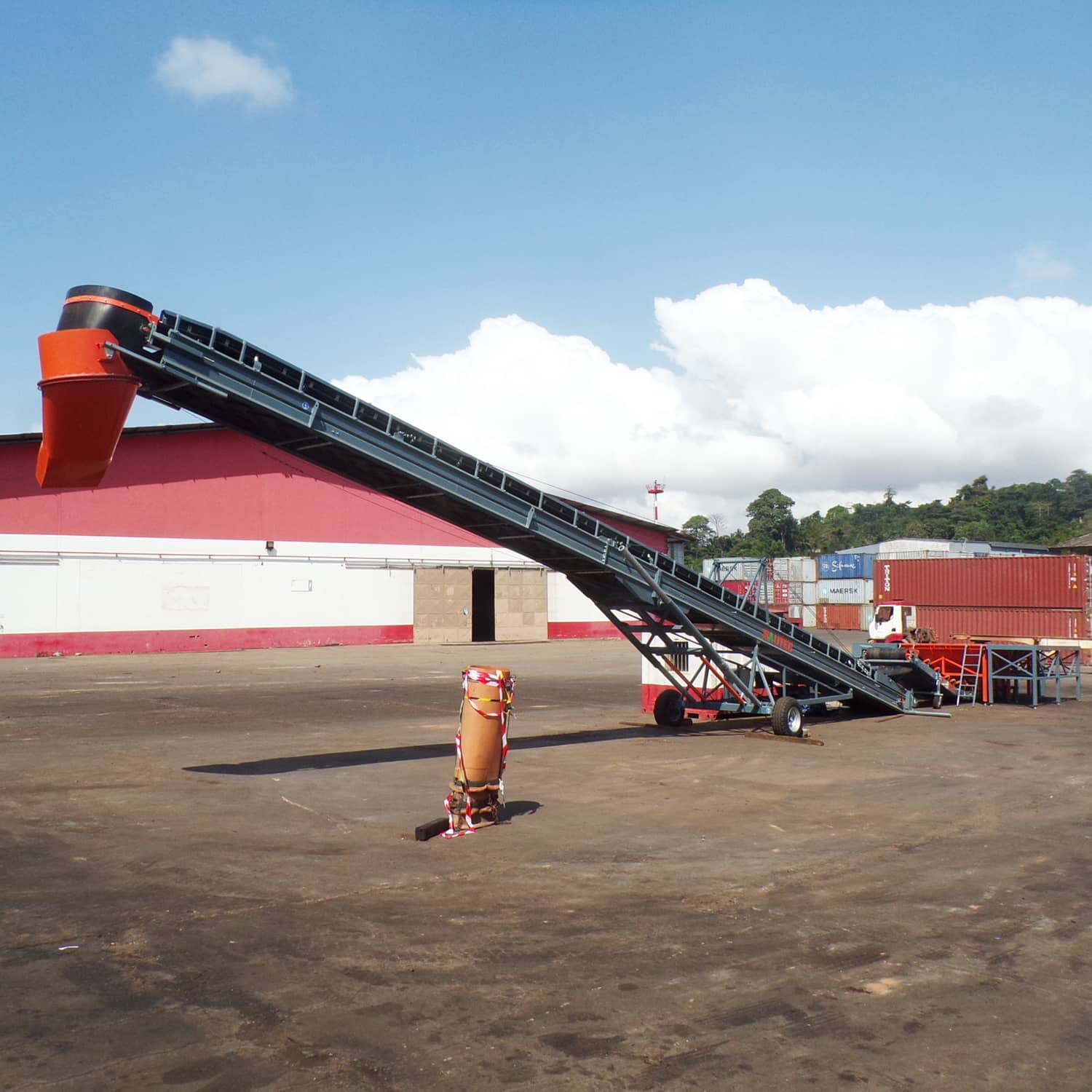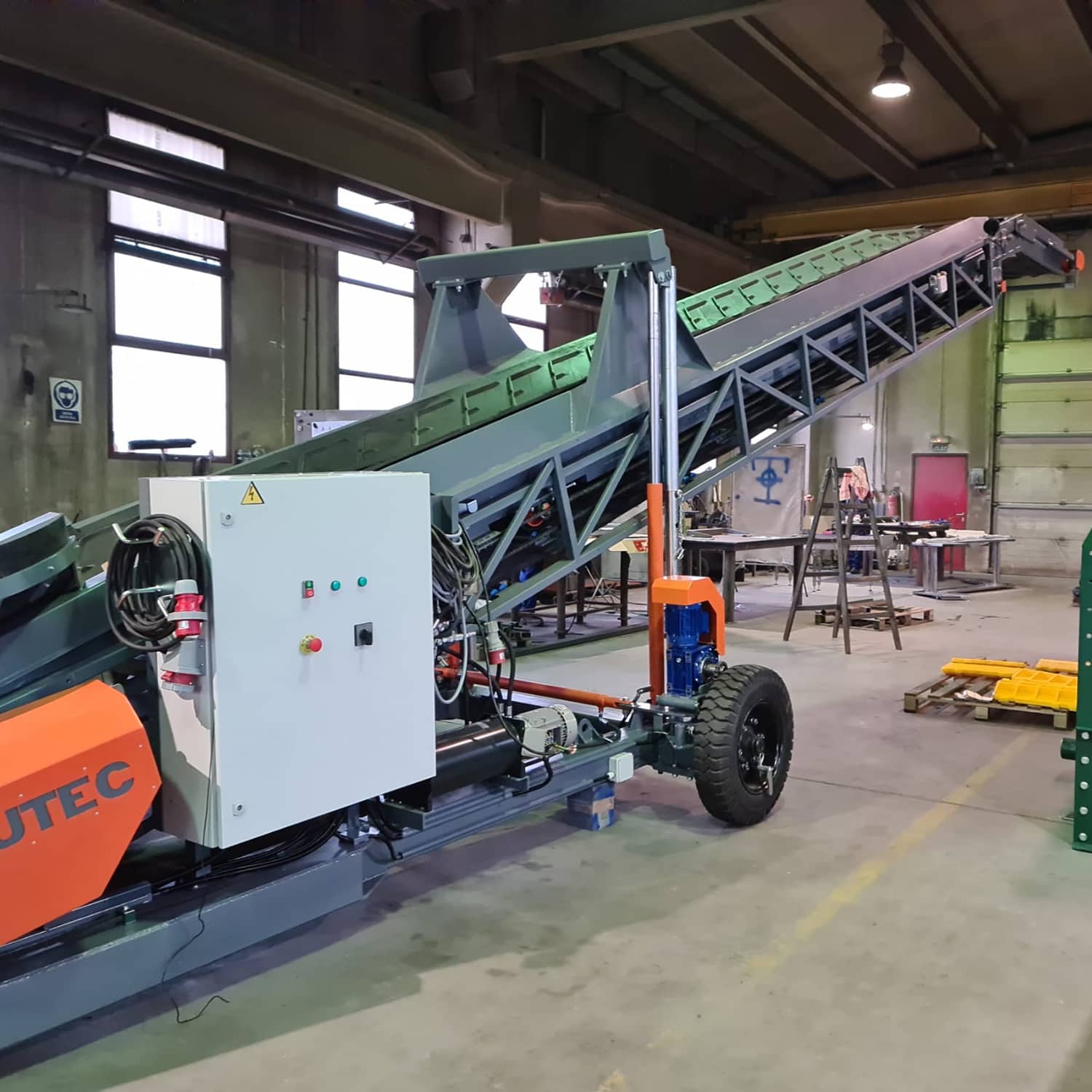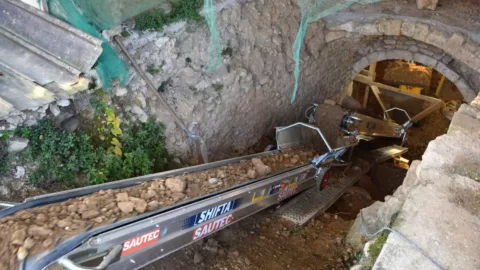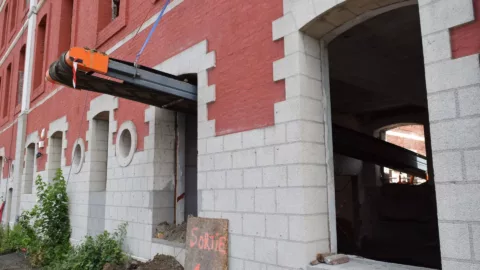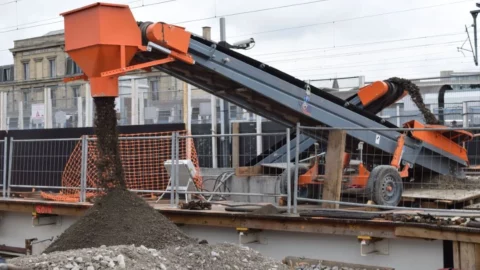Which solutions for loading containers?
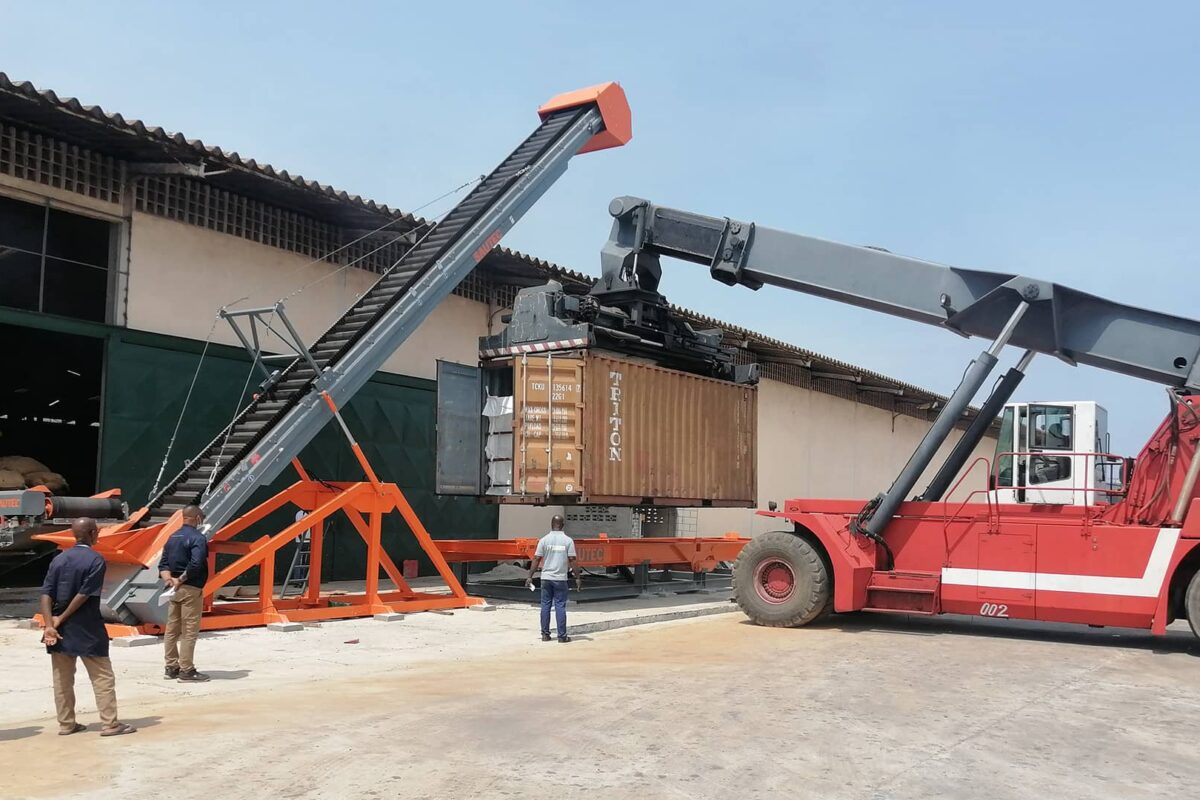
There are many ways of loading sea containers with “bulk” goods. Whether it is to export granular products (cocoa beans, coffee beans, cereals) or to transport ferrous and non-ferrous waste, simple and innovative solutions exist. Here is an overview of solutions that allow bulk loading of 20′ and/or 40′ containers.
RECAP
- Solution n°1: the tipping chassis or containers tilter.
- Solution n°2: the mobile loading station for tipping trailers.
- Solution n°3: the mobile loading belt conveyor for fixed trailers.
- Solution n°4: the telescopic loading conveyor.
Solution n°1: the tipping chassis or containers tilter.
For the loading of 20′ and 40′ containers, the use of a tipping chassis, also known as a container tipper, is probably the best solution. Thanks to the power of gravity, you can load your entire container without losing space, quickly and safely.
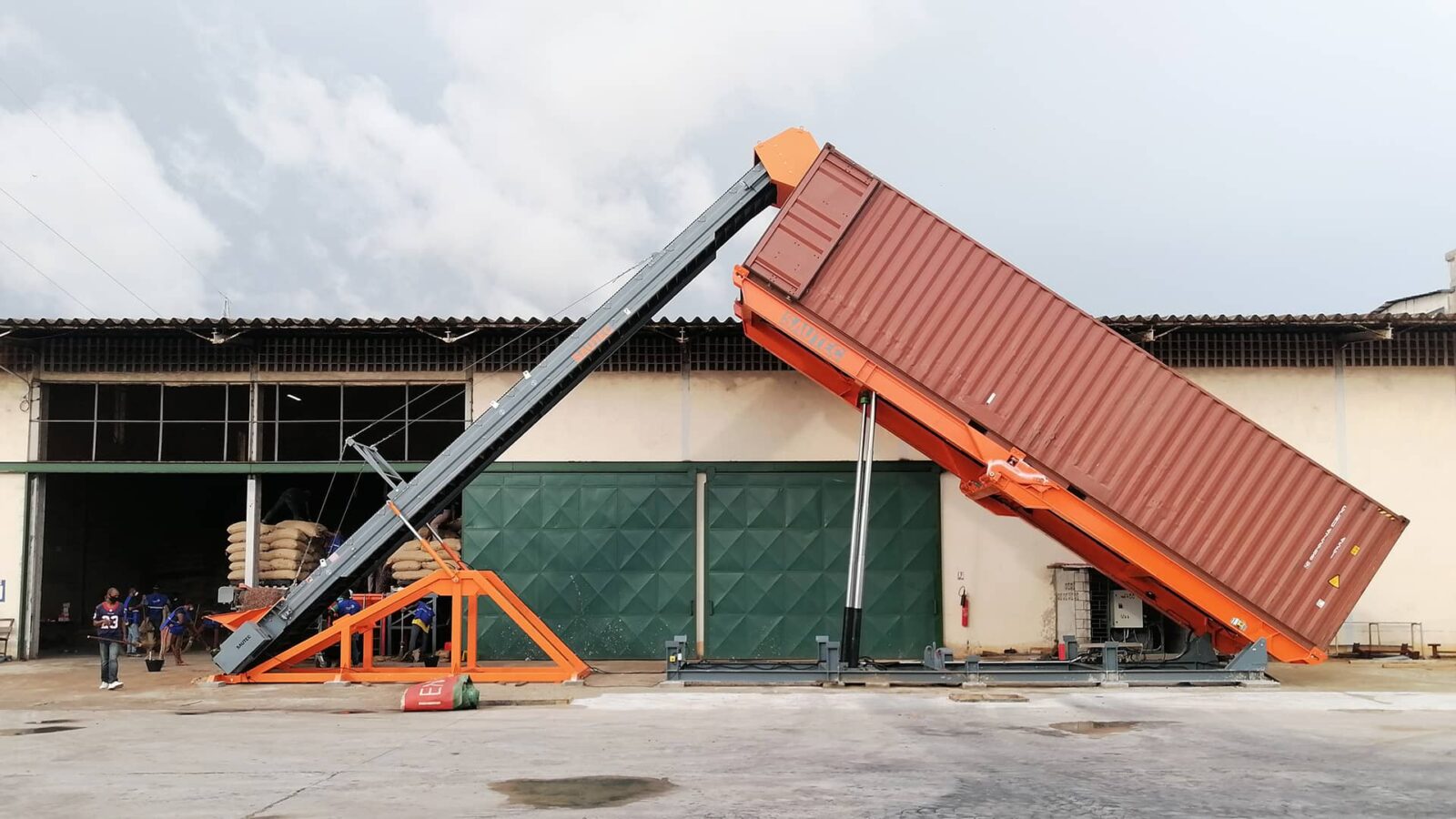
How does the containers tipper work?
The containers tipper consists of a chassis on which standard 20′ and/or 40′ containers are positioned. Depending on the model, the sea containers can be positioned directly from the truck’s trailer or with the help of an adapted handling machine such as a forklift or reach stacker.
When the container is positioned on the tipping chassis, 2 telescopic cylinders are used to tilt the container to the desired angle. Depending on the needs of your operation, the tipper can be tilted up to 90° allowing the container to be loaded vertically from the top and in its entirety!
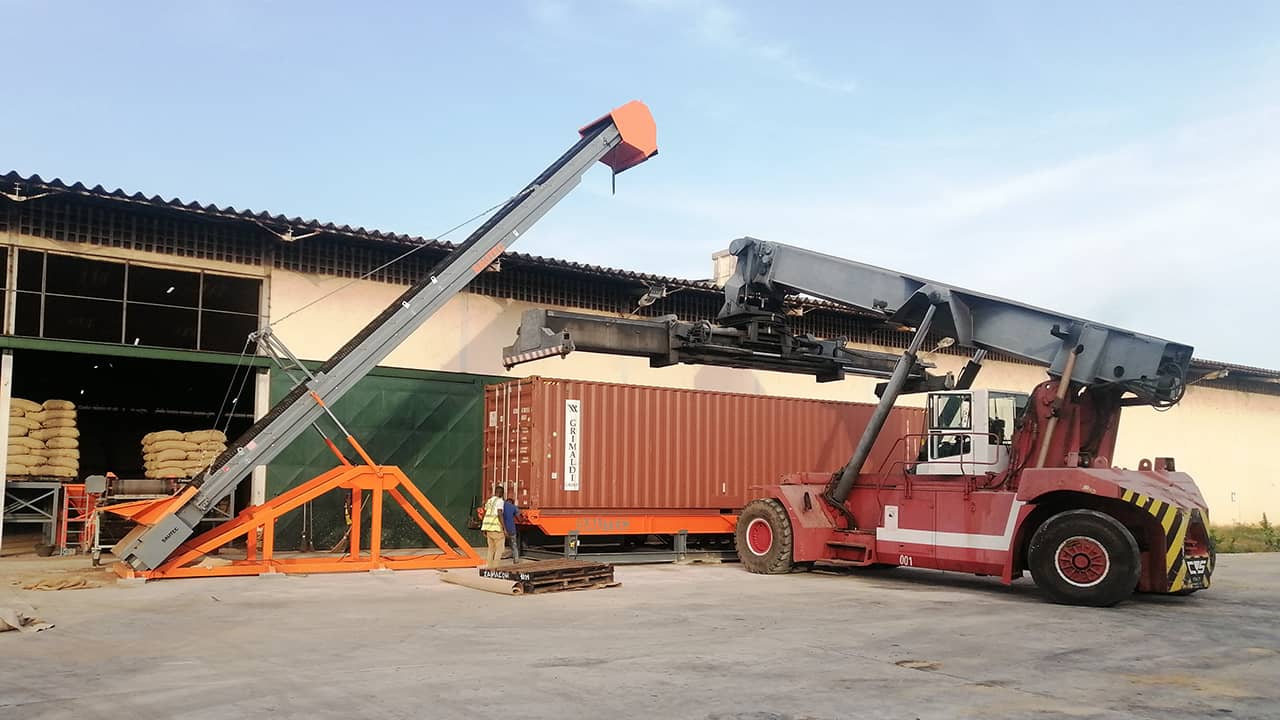

The containers tipper alone cannot be used to load the containers. Its only function is to tilt the container. To load the container, additional equipment is required. This can be an existing installation, a crane equipped with a grapple or a conveyor belt.
What are the benefits of the container tipper for exporters?
The benefits of using a containers tipper are numerous and among them we can mention the following:
- Exploitation of the total capacity of the container.
- Improved profitability of logistics flows of all types of bulk: cereals, cocoa beans, waste, ferrous waste etc.
- Reduction of container loading and truck downtime.
The containers tipper can also give you flexibility in your operations. Depending on the manufacturer, customisation of the tipper chassis with the addition of various features such as automatic closing of the container doors or weighing is possible. Also, some tippers can accommodate both 20 and 40 foot containers. This is the case of the container tipper offered by SAUTEC.
Another benefit is that only one person is needed to safely control the system using a wireless remote control.
Solution n°2: the mobile loading station for tipping trailers.
If you use container tipping trailers, the mobile loading station is probably the way to go if you want to load your 20′ containers from the top directly onto your trailers.
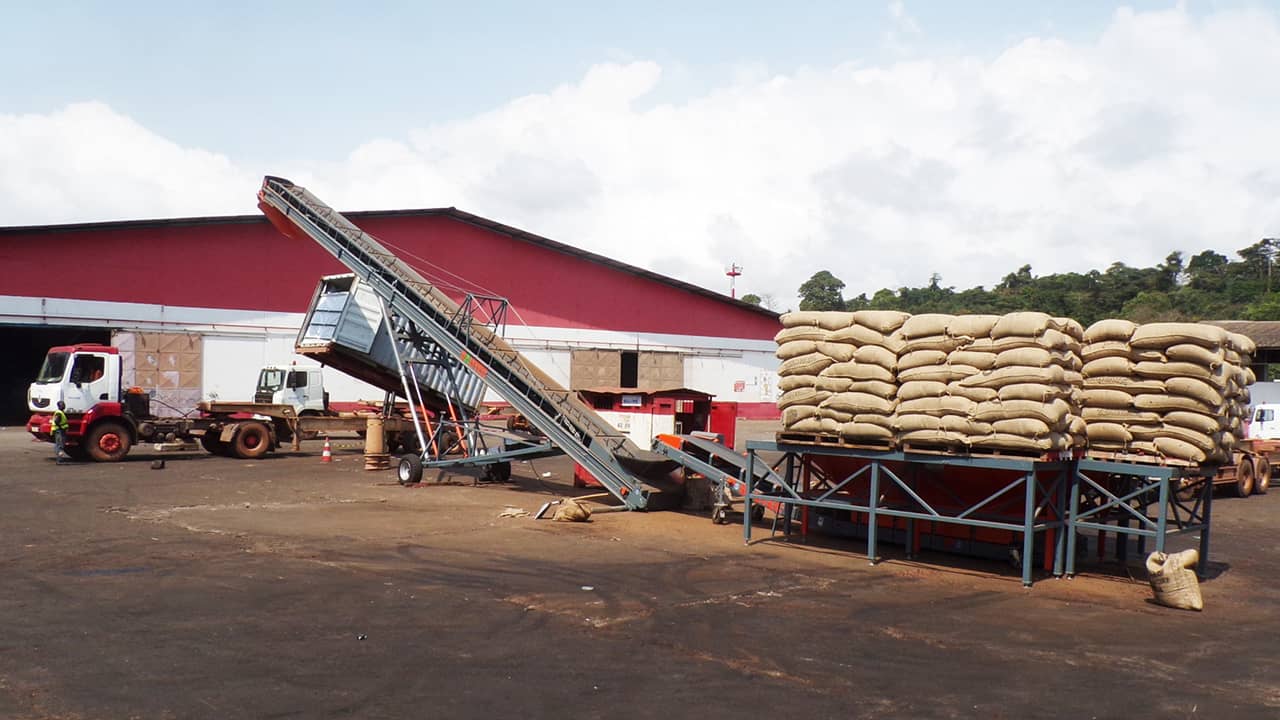
What is a loading station for tipping trailers?
The mobile loading station is a belt lift on wheels that will allow the bulk products to be transported to the container. At SAUTEC, we like to call it a “mobile loading station” because it is generally a combination of a lift with a bag cutting platform or any other device to feed the conveyor (truck unloader, hoppers). The whole unit is mobile and can therefore be moved wherever you want. No infrastructure or civil engineering is required.
What are the advantages of the loading station for tipping trailers?
This equipment allows you to preserve all the autonomy and versatility of the tipping trailers. Easily movable on site, the mobile loading station allows you to load containers at your site, in port areas or directly at your customers’ sites.
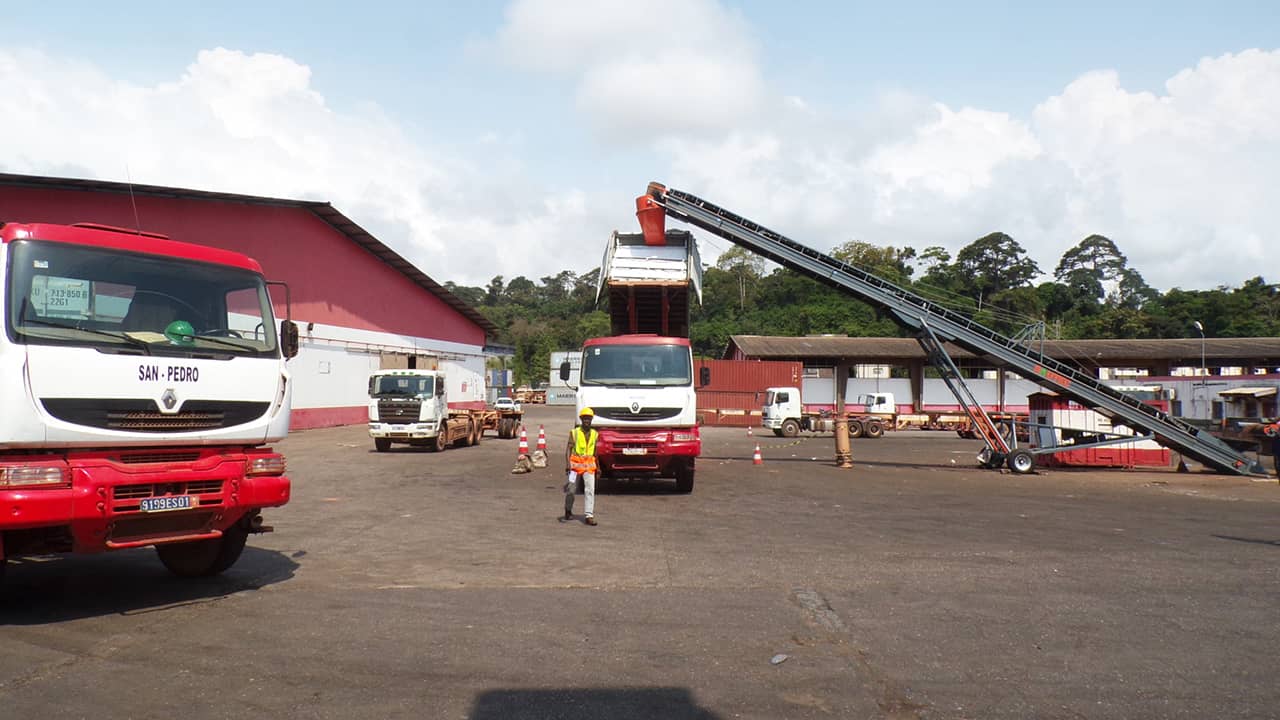
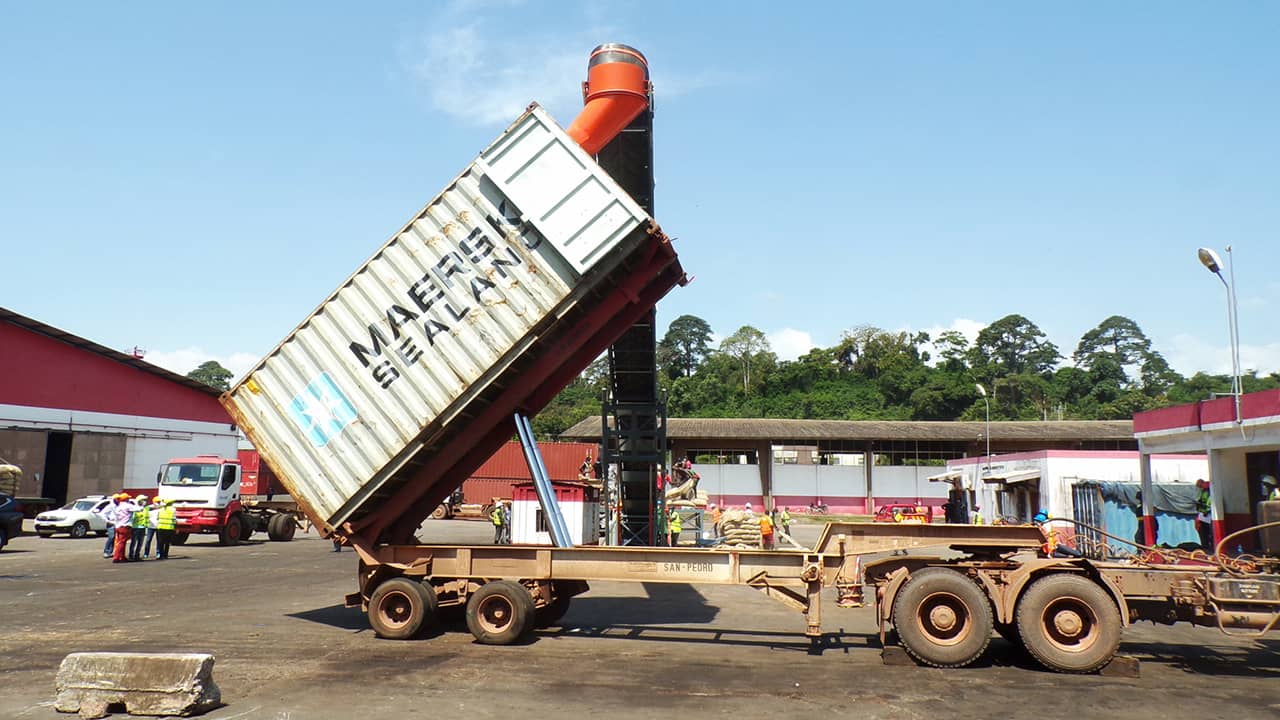
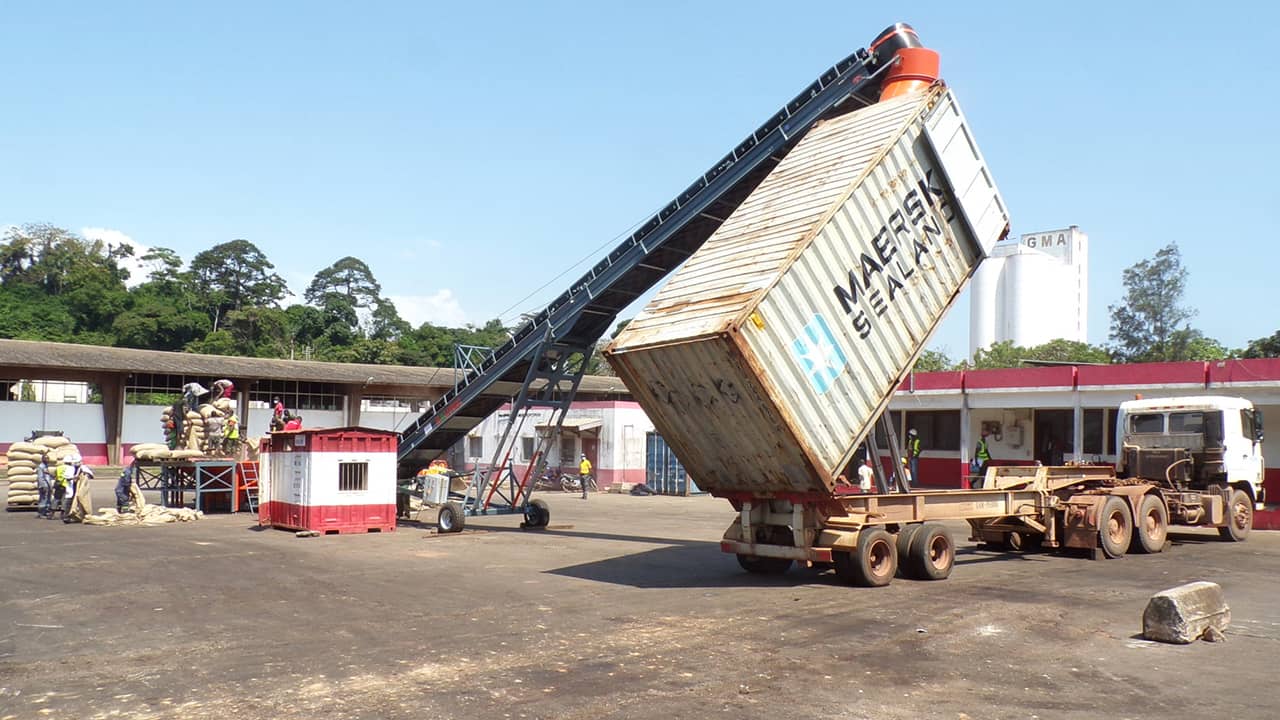
Solution n°3: the mobile loading belt conveyor for fixed trailers.
Not all trailers are equipped with a system for tilting containers. The mobile loading belt conveyor for fixed trailers offers the possibility of loading 20’containers horizontally. Although it does not fill the containers as much as the previous solutions, the loading belt conveyor is no less efficient and remains a versatile and economical alternative!

How can the belt conveyor load the containers?
The loading conveyor conveyor is a belt conveyor that has the particularity of having a diagonally inclined part to lift the goods, and another, horizontal, that enters the container to fill it. We are the only manufacturer to offer this type of solution on the market!
Our mobile loading loading belt conveyor is equipped with swivel wheels for sweeping and an adjustable tilting system for the front part to ensure a good distribution of the goods into the container.
In this case, the loading loading is optimised progressively as the truck driver moves forward to fill the container. This method of loading containers is well suited to granular materials. Indeed, for this type of product, the container is generally lined with a liner which facilitates the optimisation of the container loading. This solution does not allow for the loading of 40’ containers, which are too long in comparison to the length of the loading conveyor.
Why use a mobile loading belt conveyor?
The mobile loading conveyor enables the bulk loading of containers in the presence or absence of a loading platform. For a low investment cost, container loading times are significantly improved. Finally, the mobility of the equipment allows it to be moved to storage sites and thus avoid having to move the materials and products to be loading.
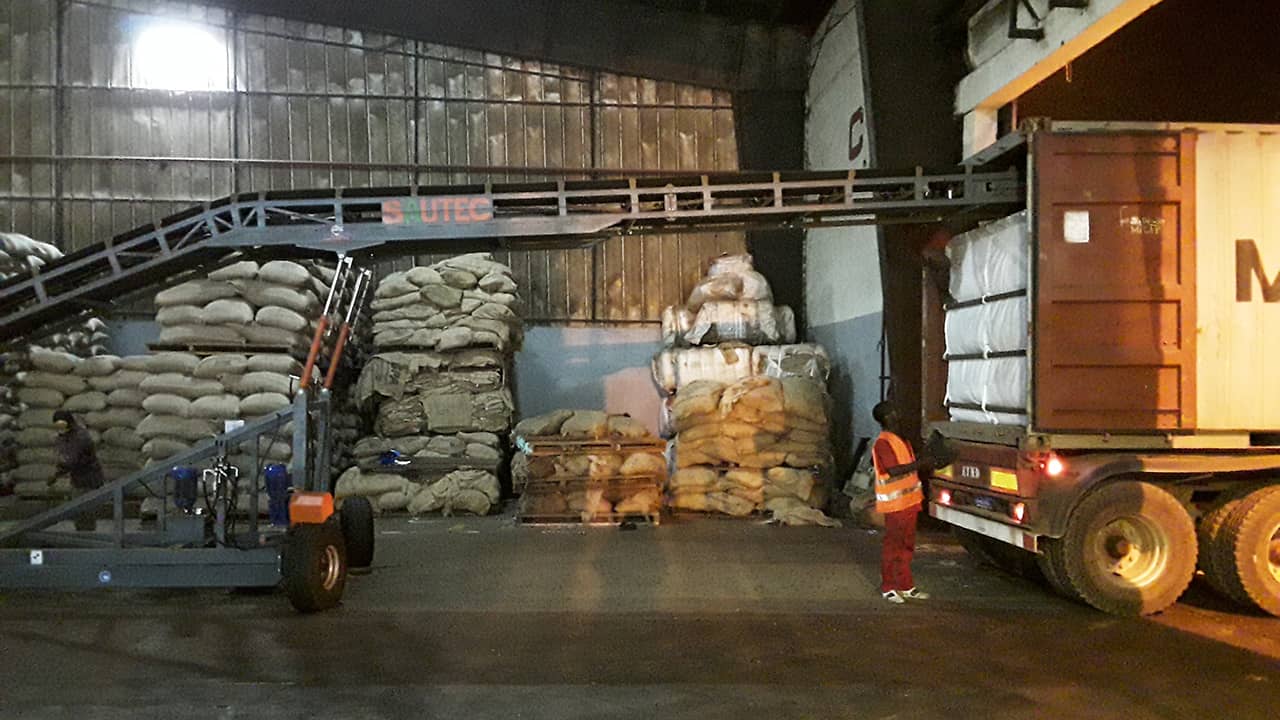
Solution n°4: the telescopic loading conveyor.
If you are loading containers from shipping platforms or if your containers are simply placed on the ground, the telescopic loading conveyor is the best solution for bulk loading of 20-foot containers.
What are the advantages of the telescopic loading conveyor?
The telescopic conveyor is an equipment that has the ability to extend or retract to accommodate the fill rate of the container. Although the telescopic clamp can extend, few manufacturers are able to offer a telescopic conveyor for loading 40-foot containers. The technical constraints related to the length of this type of container are too important.
In most cases, this type of conveyor is assembled on wheels and swivels castor. Indeed, depending on the activity, the telescopic conveyor may, for example, have to be moved between the loading platforms.
In contrast, when filling filling containers on the ground, the telescopic belt conveyor is used in a fixed position. If it is equipped with swivel front wheels, this solution offers the possibility of alternating the loading between 2 or even 3 containers. This means that no time is lost during the handling of containers. While one container is being moved, loading operations are not stopped and can be carried out in another container.
Like the other solutions mentioned in this article, the telescopic loading belt conveyor makes working conditions more ergonomic and reduces the time required for safe container loading operations.
What should we remember?
If you have reached the end of the article, well done! If you’ve scrolled down a bit quickly, then we’ve provided you with a short summary.
There are as many solutions as there are ways of positioning the containers for loading. In this article we have mentioned 4 versatile and flexible solutions for loading containers. One of them allows the loading of both 20′ and 40′ containers and 3 others allow the loading of 20′ containers:
- Container tipper: ideal for optimal filling of 20 and 40 foot containers, for all types of bulk materials, including waste.
- The mobile loading station for tipping trailers: the solution for loading granular products into containers positioned on trailers equipped with tipping devices.
- The mobile loading belt conveyor for fixed trailers: adapted for 20′ containers on standard trailers, it is a versatile and economical solution.
- The telescopic loading conveyor: the preferred equipment for loading containers from shipping platforms or for the simultaneous filling of containers on the ground.
2 other solutions not mentioned in this article are also available: the fixed vertical loading unit and horizontal container loading.




















